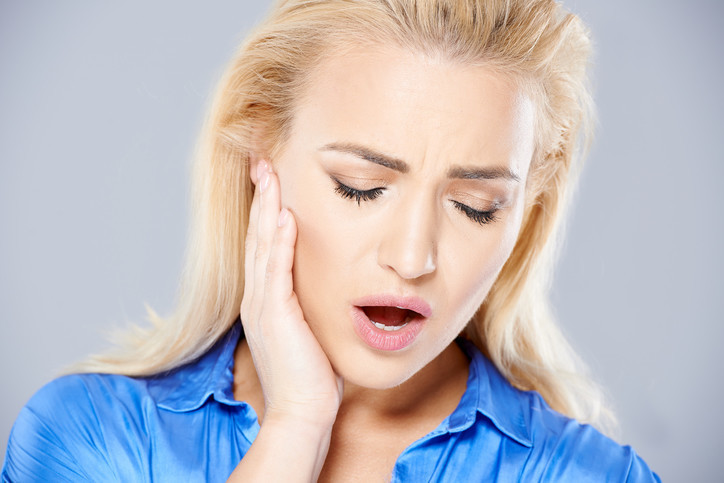
Many sufferers of Temporomandibular disorders, more commonly called TMJ, don’t immediately think of Chiropractic care as a solution to their issue. Chiropractic adjustment and Active Release Techniques (Soft tissue therapy) are very effective at breaking up adhesions and scar tissue on the muscles and ligaments that are causing the TMJ symptoms to present themselves. Our practice has seen an increase in referrals from dental practices related to TMJ over the past year. We have been treating more headache cases that are TMJ related than ever before. We have been working with many of these dental practices around the tristate to have the most effective treatment possible. We all agree that mouth guards help to decrease the amount of teeth grinding and promote the safety of your teeth. What it doesnt do is keep you from clinching your teeth or help to decrease the tension in the muscles around the jaw.
TMJ affects the joint where your skull meets your lower jaw. Common symptoms include jaw clicking, pain, stiffness or a locked jaw. These symptoms are a result of the joint being misaligned and/or muscle adhesions in the jaw muscles which can occur from grinding or clenching your teeth, poor posture, or injury.
This occurs when the muscles tighten and the skull and lower jaw are pulled closer together and become misaligned. This puts pressure on the joint and compresses the disc within the joint. When the ligaments stretch or tear it can pull the disc out of position. Degeneration of the joint occurs when the disc wears away, leaving the bones rubbing against and irritating the nerves.
There are many potential causes of TMJ disorders. They include:
- Wear and tear of the joint
- Arthritic inflammation
- Injury
- Stress
- Dental appliances
- Clenching or grinding your teeth
- Poor alignment of teeth
Symptoms commonly presented by TMJ
- Headaches or earaches
- Pain in the jaw upon waking up
- Jaws that get stuck or locked




